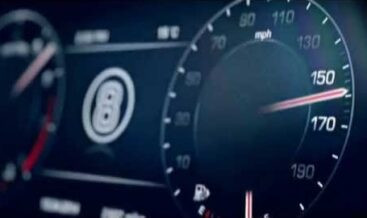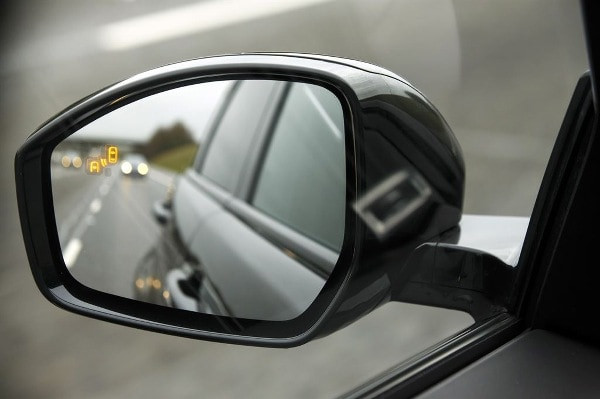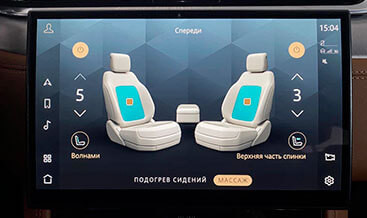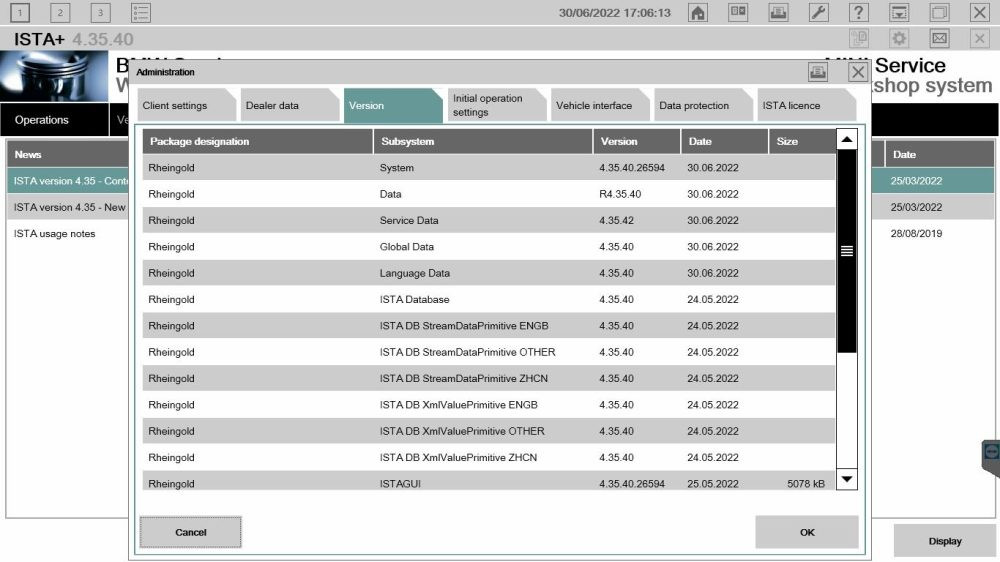Range Rover Sport: Reprogramming The Start/Stop System

Range Rover Sport reprogramming the start/stop system offers a convenient solution for drivers seeking more control over their vehicle’s fuel-saving feature, visit CARDIAGTECH.NET to discover how we can help you personalize your driving experience. Explore the benefits of auto start-stop disable, start stop customization, and ESS programming with our expert services.
1. Understanding the Range Rover Sport Start/Stop System
The Range Rover Sport, known for its luxury and performance, incorporates an automatic start/stop (also known as Engine Start Stop (ESS)) system to enhance fuel efficiency and reduce emissions. This system automatically shuts off the engine when the vehicle comes to a complete stop, such as at a traffic light, and restarts it when the driver releases the brake pedal or presses the accelerator. While this feature is designed to save fuel and reduce emissions, it can sometimes be a nuisance for drivers who prefer a more consistent engine operation. Understanding the nuances of this system is crucial before considering any modifications.
1.1. How the Start/Stop System Works
The start/stop system relies on a network of sensors and actuators to determine when to shut off and restart the engine. Key components include:
- Crankshaft Position Sensor: Monitors the engine’s rotation.
- Battery Monitoring System: Ensures sufficient battery charge for restarts.
- Brake Pedal Sensor: Detects when the brake pedal is depressed.
- Starter Motor: A heavy-duty starter designed for frequent use.
- ECU (Engine Control Unit): The brain of the system, processing data and controlling engine operation.
When the vehicle stops and certain conditions are met (engine at operating temperature, sufficient battery charge, etc.), the ECU shuts off the engine. Releasing the brake pedal or pressing the accelerator signals the ECU to restart the engine almost instantly.
1.2. Benefits and Drawbacks of the System
Benefits:
- Fuel Efficiency: The primary benefit is reduced fuel consumption, especially in urban driving conditions with frequent stops.
- Reduced Emissions: By turning off the engine when idle, the system lowers the amount of pollutants released into the atmosphere.
- Quieter Operation: Eliminates engine noise during stops, enhancing the driving experience.
Drawbacks:
- Inconvenience: Some drivers find the frequent engine shutdowns and restarts disruptive and prefer continuous engine operation.
- Potential Wear and Tear: Although designed for frequent use, the start/stop system can increase wear and tear on the starter motor and battery over time.
- Delayed Response: The slight delay between releasing the brake and the engine restarting can be noticeable in certain driving situations.
- Battery Drain: In hot weather conditions, the system will auto start the engine again, even if the driver is at a traffic light, to keep the AC running. This causes an extra drain on the battery.
2. Why Reprogram the Start/Stop System?
Reprogramming the start/stop system offers a tailored solution for Range Rover Sport owners who find the default behavior of the system less than ideal. By altering the system’s programming, drivers can gain greater control over when the start/stop function is active, addressing some of the common frustrations associated with its automatic operation. There are several compelling reasons to consider reprogramming:
2.1. Personal Preference
Many drivers simply prefer the consistent operation of the engine and find the repeated shutdowns and restarts of the start/stop system annoying. Reprogramming allows drivers to maintain continuous engine operation and provides a smoother, more predictable driving experience.
2.2. Minimizing Wear and Tear
While modern start/stop systems are designed to withstand frequent use, some owners worry about the long-term effects on components such as the starter motor and battery. By reprogramming the system to be less active or remember it’s last setting (disable or enable), wear and tear on these components can be reduced.
2.3. Improving Drivability
In certain driving situations, the slight delay between releasing the brake and the engine restarting can be problematic. This delay can be particularly noticeable when making quick maneuvers or navigating busy intersections. Reprogramming the system can eliminate this delay, resulting in improved responsiveness and control.
2.4. Long Term Battery Health
Many people are experiencing a faster degradation of their 12V battery due to the Auto Start Stop feature. Reprogramming can help keep the battery healthy for longer and avoid having to replace the battery as often.
2.5. Avoiding Unnecessary Restarts
In stop-and-go traffic, the engine may shut off and restart repeatedly in short intervals, which some drivers find excessive and counterproductive. Reprogramming can be configured to prevent these frequent restarts, providing a more relaxed driving experience.
3. Methods of Reprogramming the Start/Stop System
There are several ways to reprogram the start/stop system in a Range Rover Sport, each with its own advantages and considerations. These methods range from simple modifications to more advanced electronic adjustments, catering to different levels of technical expertise and preferences.
3.1. Using a Diagnostic Tool
One of the most common and effective methods is to use a diagnostic tool to reprogram the ECU (Engine Control Unit). These tools, often used by professional mechanics, can access the vehicle’s software and modify the settings related to the start/stop system.
Steps:
- Connect the Diagnostic Tool: Plug the diagnostic tool into the OBD-II port of the Range Rover Sport. The OBD-II port is usually located under the dashboard on the driver’s side.
 Connecting a diagnostic tool to the OBD-II port for Range Rover Sport ECU reprogramming
Connecting a diagnostic tool to the OBD-II port for Range Rover Sport ECU reprogramming
- Access the ECU: Use the diagnostic tool to navigate to the ECU settings. This may involve selecting the vehicle’s make, model, and year, followed by accessing the engine control module.
- Modify the Start/Stop Settings: Look for options related to the start/stop system. Common settings include disabling the system altogether, adjusting the conditions under which it activates, or setting it to remember the last used setting.
- Save the Changes: After making the desired changes, save the new settings to the ECU.
- Test the System: Start the vehicle and test the start/stop system to ensure the changes have taken effect.
Tools:
- Autel MaxiSys MS906BT: A comprehensive diagnostic tool offering advanced ECU programming capabilities.
- Launch X431 V+: Another popular option among mechanics, known for its wide vehicle coverage and user-friendly interface.
- Foxwell NT530: Is a more basic diagnostic tool.
- CARDIAGTECH.NET SX-Tool: Specializes in Range Rover and Land Rover programming. Contact them at +1 (641) 206-8880 or visit 276 Reock St, City of Orange, NJ 07050, United States.
3.2. Software Customization
For those with advanced technical skills, software customization offers a more direct approach to reprogramming the start/stop system. This involves modifying the ECU’s software code to alter the behavior of the system.
Steps:
- Extract the ECU Software: Use specialized software to extract the current software code from the ECU.
- Modify the Code: Analyze the code to identify the sections that control the start/stop system. Modify these sections to achieve the desired behavior, such as disabling the system or adjusting its parameters.
- Flash the Modified Code: Use a flashing tool to upload the modified code back to the ECU.
- Test the System: Start the vehicle and test the start/stop system to ensure the changes have taken effect.
Software and Hardware:
- WinOLS: A popular software for analyzing and modifying ECU software.
- KESS V2: A flashing tool used to read and write ECU data.
- FGTech Galletto 4: Another option for ECU flashing, offering compatibility with a wide range of vehicles.
3.3. Aftermarket Modules
Another option is to install an aftermarket module that overrides the start/stop system. These modules typically plug into the vehicle’s wiring harness and can disable the system or provide other customization options.
Steps:
- Purchase a Compatible Module: Research and purchase a start/stop disable module that is compatible with your Range Rover Sport model year.
- Install the Module: Follow the manufacturer’s instructions to install the module, typically involving disconnecting the battery and plugging the module into the appropriate wiring harness connectors.
- Test the System: Reconnect the battery and test the start/stop system to ensure the module is functioning correctly.
Modules:
- SmartStopStart: A popular option for disabling the start/stop system in various vehicles.
- ADS Start/Stop Module: Offers customizable settings for the start/stop system.
3.4. Professional Service
If you are not comfortable performing these modifications yourself, you can hire a professional mechanic or tuner to reprogram the start/stop system. These professionals have the expertise and equipment to perform the modifications safely and effectively. Contact CARDIAGTECH.NET at +1 (641) 206-8880 for expert assistance.
4. Step-by-Step Guide to Reprogramming via Diagnostic Tool
Using a diagnostic tool is a straightforward method for reprogramming the start/stop system on a Range Rover Sport. Here’s a detailed guide to help you through the process:
4.1. Preparation
- Gather Necessary Tools: Ensure you have a compatible diagnostic tool (e.g., Autel MaxiSys MS906BT, Launch X431 V+).
- Vehicle Condition: Make sure your Range Rover Sport is in good working condition with a fully charged battery.
- Location: Park your vehicle in a well-ventilated area.
- Software: Ensure your diagnostic tool has the latest software updates.
4.2. Connecting the Diagnostic Tool
- Locate the OBD-II Port: This port is usually located under the dashboard on the driver’s side.
- Plug in the Tool: Connect the diagnostic tool to the OBD-II port.
- Turn on the Ignition: Turn the ignition to the “ON” position, but do not start the engine.
4.3. Accessing the ECU Settings
- Power On the Diagnostic Tool: Turn on the diagnostic tool and wait for it to boot up.
- Select Vehicle Information: Navigate through the tool’s menu to select the make, model, and year of your Range Rover Sport.
- Enter VIN: You may be prompted to enter the VIN (Vehicle Identification Number) to ensure accurate vehicle identification.
- Access the Engine Control Module (ECM): Look for options like “Control Units,” “ECU Diagnostics,” or similar, and select the engine control module.
4.4. Modifying the Start/Stop Settings
- Navigate to Start/Stop Settings: Within the ECM, look for settings related to the start/stop system. This may be under a section labeled “Start/Stop,” “Auto Start-Stop,” or similar.
- Adjust the Settings:
- Disable the System: Some tools offer a straightforward option to disable the start/stop system completely.
- Adjust Activation Conditions: You might find settings to modify the conditions under which the system activates, such as minimum battery voltage or engine temperature.
- Last State Memory: A preferred option is to set the system to remember the last used setting. If you disabled the system on a trip, it will remain off on subsequent trips until you turn it back on.
- Save the Changes: Once you have made the desired adjustments, select the option to save the changes to the ECU. This may be labeled “Write,” “Save,” or “Apply.”
4.5. Testing the System
- Start the Engine: Start the engine and allow it to run for a few minutes to ensure the new settings are applied.
- Test the Start/Stop System: Drive the vehicle and observe the behavior of the start/stop system. Verify that it is functioning according to your new settings.
- Troubleshooting: If the system is not behaving as expected, double-check your settings in the diagnostic tool and repeat the process if necessary.
4.6. Post-Reprogramming Tips
- Record Original Settings: Before making any changes, record the original settings of the start/stop system. This will allow you to revert to the factory settings if needed.
- Keep the Diagnostic Tool Connected: During the reprogramming process, ensure the diagnostic tool remains connected and powered on to avoid interruptions.
- Follow Tool Prompts: Pay close attention to any prompts or warnings displayed by the diagnostic tool during the process.
5. Potential Risks and Considerations
While reprogramming the start/stop system can offer several benefits, it’s important to be aware of potential risks and considerations before proceeding. Understanding these factors can help you make an informed decision and avoid potential issues.
5.1. Voiding Warranty
Modifying the ECU or other vehicle systems can void the manufacturer’s warranty. If your Range Rover Sport is still under warranty, reprogramming the start/stop system may result in the loss of warranty coverage for related components. Always check your warranty terms before making any modifications.
5.2. Software Issues
Incorrectly reprogramming the ECU can lead to software issues, such as error codes, reduced performance, or even complete engine failure. It’s crucial to use reliable diagnostic tools and software, and to follow the instructions carefully. If you’re not confident in your abilities, seek professional assistance.
5.3. Compatibility
Not all reprogramming methods or aftermarket modules are compatible with every Range Rover Sport model year. Ensure that the method or module you choose is specifically designed for your vehicle to avoid compatibility issues.
5.4. Legal Compliance
In some regions, disabling or modifying vehicle emissions control systems may be illegal. Check your local laws and regulations before reprogramming the start/stop system to ensure compliance.
5.5. Insurance Implications
Modifying vehicle systems can affect your insurance coverage. Inform your insurance provider about any modifications you make to your Range Rover Sport to ensure you remain covered in the event of an accident or other incident.
6. Choosing the Right Method
Selecting the appropriate method for reprogramming the start/stop system depends on your technical skills, budget, and preferences. Here’s a breakdown to help you decide:
6.1. Diagnostic Tool
- Pros: Relatively straightforward, widely accessible, and can be used for other vehicle diagnostics.
- Cons: Requires purchasing a diagnostic tool, which can be expensive.
- Best for: DIY enthusiasts with some technical knowledge and those who want a versatile tool for vehicle maintenance.
6.2. Software Customization
- Pros: Offers the most control over the system’s behavior.
- Cons: Requires advanced technical skills and specialized software, and carries a higher risk of causing software issues.
- Best for: Experienced tuners and those with a deep understanding of ECU software.
6.3. Aftermarket Modules
- Pros: Simple to install and use, no need for advanced technical skills.
- Cons: Limited customization options, may not be compatible with all models.
- Best for: Those who want a quick and easy solution without the need for complex programming.
6.4. Professional Service
- Pros: Safe and effective, performed by experienced professionals.
- Cons: More expensive than DIY methods.
- Best for: Those who are not comfortable performing the modifications themselves or want to ensure the job is done correctly.
7. Real-World Benefits and Use Cases
Understanding how reprogramming the start/stop system can improve your driving experience is best illustrated through real-world examples. Here are a few use cases highlighting the benefits:
7.1. Urban Commuting
In urban areas with frequent stop-and-go traffic, the start/stop system can become quite intrusive. Reprogramming the system to remember it’s last setting allows drivers to disable it during their commute, providing a smoother and more predictable driving experience. This is particularly useful when navigating busy intersections or making frequent stops at traffic lights.
7.2. Off-Roading
When off-roading, consistent engine operation is crucial for maintaining control and momentum. The start/stop system can interfere with this, causing unexpected engine shutdowns on uneven terrain. Reprogramming the system ensures that the engine remains running, providing the necessary power and control for off-road adventures.
7.3. Towing
Towing heavy loads requires consistent engine power and torque. The start/stop system can hinder this by shutting off the engine at inopportune moments. Disabling the system through reprogramming ensures that the engine delivers the necessary power for safe and efficient towing.
7.4. Cold Weather Driving
In cold weather, the start/stop system may not function optimally due to the engine needing to maintain a certain temperature. Additionally, frequent restarts can put extra strain on the battery. Reprogramming the system to be less active or disabled during cold weather can improve engine performance and reduce battery wear.
7.5. Long Trips
On long highway trips, the start/stop system may not provide significant fuel savings and can become more of a nuisance. Disabling the system allows for a more relaxed and consistent driving experience, especially on less congested roads.
8. Maintaining Your Range Rover Sport After Reprogramming
After reprogramming the start/stop system, it’s important to maintain your Range Rover Sport to ensure optimal performance and longevity. Here are some tips:
8.1. Regular Diagnostics
Continue to perform regular diagnostics using a diagnostic tool to monitor the vehicle’s systems and identify any potential issues. This will help you catch problems early and prevent them from escalating into more serious repairs.
8.2. Battery Maintenance
Pay close attention to the condition of your vehicle’s battery, as the start/stop system can impact its lifespan. Ensure the battery is properly charged and replace it as needed.
8.3. Software Updates
Keep your diagnostic tool and any related software up to date to ensure compatibility and access to the latest features and improvements.
8.4. Consult Professionals
If you experience any unusual issues or have concerns about the performance of your Range Rover Sport, consult a professional mechanic or tuner for assistance.
9. Call to Action
Ready to take control of your Range Rover Sport’s start/stop system? Contact CARDIAGTECH.NET today at +1 (641) 206-8880 or visit us at 276 Reock St, City of Orange, NJ 07050, United States. Our expert technicians can help you reprogram the system to suit your preferences and driving needs. Don’t let the auto start-stop feature dictate your driving experience any longer. Trust CARDIAGTECH.NET for professional, reliable, and customized solutions.
We understand the challenges faced by auto repair professionals: the physical demands, constant need for updated knowledge, and the pressure to deliver efficient and accurate service. That’s why CARDIAGTECH.NET offers a range of high-quality tools and equipment designed to enhance your work and increase customer satisfaction. From advanced diagnostic tools to ECU programming solutions, we have everything you need to stay ahead in the rapidly evolving automotive industry.
10. Frequently Asked Questions (FAQ)
1. What is the Range Rover Sport start/stop system?
The start/stop system is an automatic feature designed to improve fuel efficiency by turning off the engine when the vehicle is stopped and restarting it when the driver releases the brake or presses the accelerator.
2. Why would I want to reprogram the start/stop system?
Some drivers find the system disruptive or prefer continuous engine operation. Reprogramming allows you to disable the system, adjust its behavior, or set it to remember the last setting.
3. Will reprogramming void my vehicle’s warranty?
Modifying the ECU or other vehicle systems can void the manufacturer’s warranty. Check your warranty terms before making any modifications.
4. What tools are needed to reprogram the start/stop system?
You may need a diagnostic tool (e.g., Autel MaxiSys MS906BT, Launch X431 V+), software customization tools (e.g., WinOLS, KESS V2), or an aftermarket module.
5. Is it legal to disable the start/stop system?
In some regions, disabling or modifying vehicle emissions control systems may be illegal. Check your local laws and regulations before reprogramming the system.
6. Can I reprogram the system myself, or do I need a professional?
It depends on your technical skills and comfort level. Simple methods like using a diagnostic tool can be done DIY, but more advanced methods may require professional assistance.
7. How do I know if the reprogramming was successful?
After reprogramming, test the start/stop system by driving the vehicle and observing its behavior. Ensure it functions according to your new settings.
8. What are the potential risks of reprogramming the start/stop system?
Potential risks include software issues, reduced vehicle performance, and voiding the warranty.
9. Are there any aftermarket modules that can disable the start/stop system?
Yes, there are several aftermarket modules available, such as SmartStopStart and ADS Start/Stop Module.
10. How can CARDIAGTECH.NET help me with reprogramming the start/stop system?
CARDIAGTECH.NET offers expert assistance and high-quality tools for reprogramming the start/stop system. Contact us at +1 (641) 206-8880 or visit us at 276 Reock St, City of Orange, NJ 07050, United States.







